
IT solutions provider ePlus (NASDAQ: PLUS) fell short of the market’s revenue expectations in Q1 CY2025, with sales falling 10.2% year on year to $498.1 million. Its non-GAAP profit of $1.11 per share was 28.3% above analysts’ consensus estimates.
Is now the time to buy ePlus? Find out by accessing our full research report, it’s free.
ePlus (PLUS) Q1 CY2025 Highlights:
- Revenue: $498.1 million vs analyst estimates of $523.9 million (10.2% year-on-year decline, 4.9% miss)
- Adjusted EPS: $1.11 vs analyst estimates of $0.87 (28.3% beat)
- Initiating fiscal 2026 guidance (the company's fiscal year ends in March): "net sales growth of low single digits, and gross profit and adjusted EBITDA in the mid single digits" (below expectations)
- Operating Margin: 7%, up from 5.3% in the same quarter last year
- Market Capitalization: $1.72 billion
"During the fourth quarter, we delivered double digit growth across several key metrics, including gross profit, net earnings and EPS," commented Mark Marron, president and CEO of ePlus.
Company Overview
Starting as a financing company in 1990 before evolving into a full-service technology provider, ePlus (NASDAQ: PLUS) provides comprehensive IT solutions, professional services, and financing options to help organizations optimize their technology infrastructure and supply chain processes.
Sales Growth
Reviewing a company’s long-term sales performance reveals insights into its quality. Any business can experience short-term success, but top-performing ones enjoy sustained growth for years.
With $2.07 billion in revenue over the past 12 months, ePlus is a mid-sized business services company, which sometimes brings disadvantages compared to larger competitors benefiting from better economies of scale.
As you can see below, ePlus’s 4.9% annualized revenue growth over the last five years was mediocre. This shows it couldn’t generate demand in any major way and is a tough starting point for our analysis.
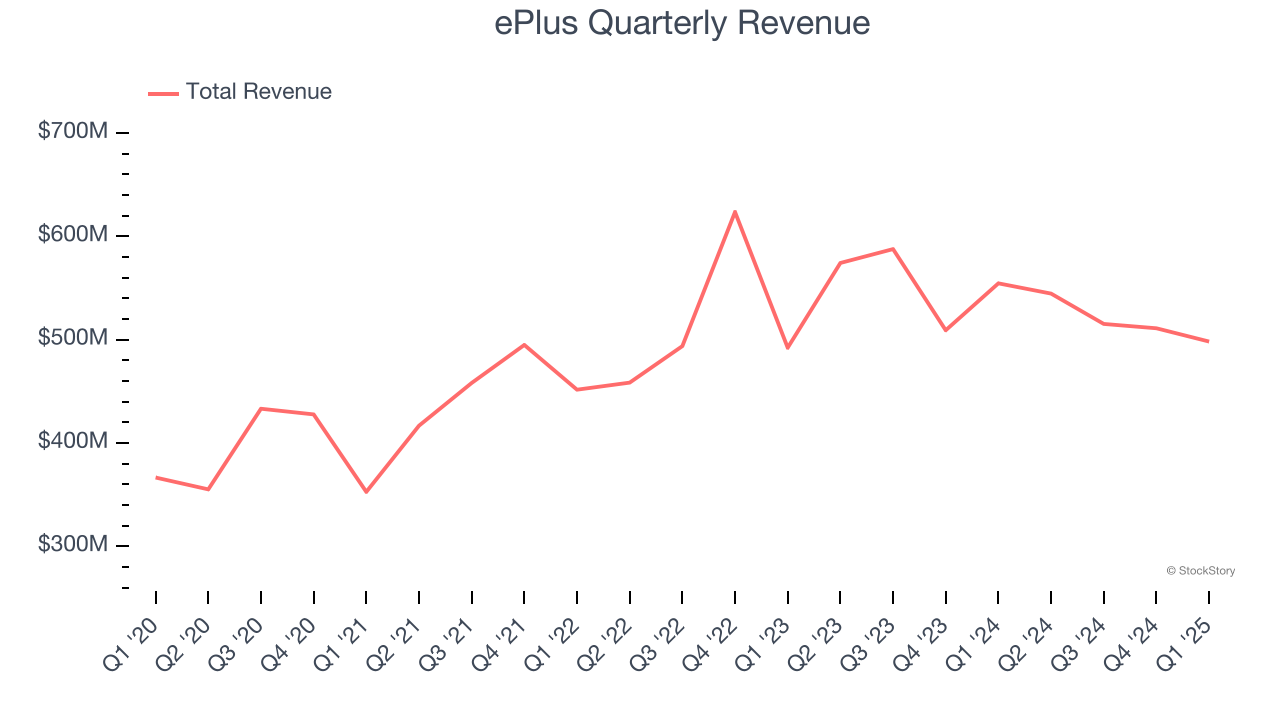
Long-term growth is the most important, but within business services, a half-decade historical view may miss new innovations or demand cycles. ePlus’s recent performance shows its demand has slowed as its revenue was flat over the last two years. 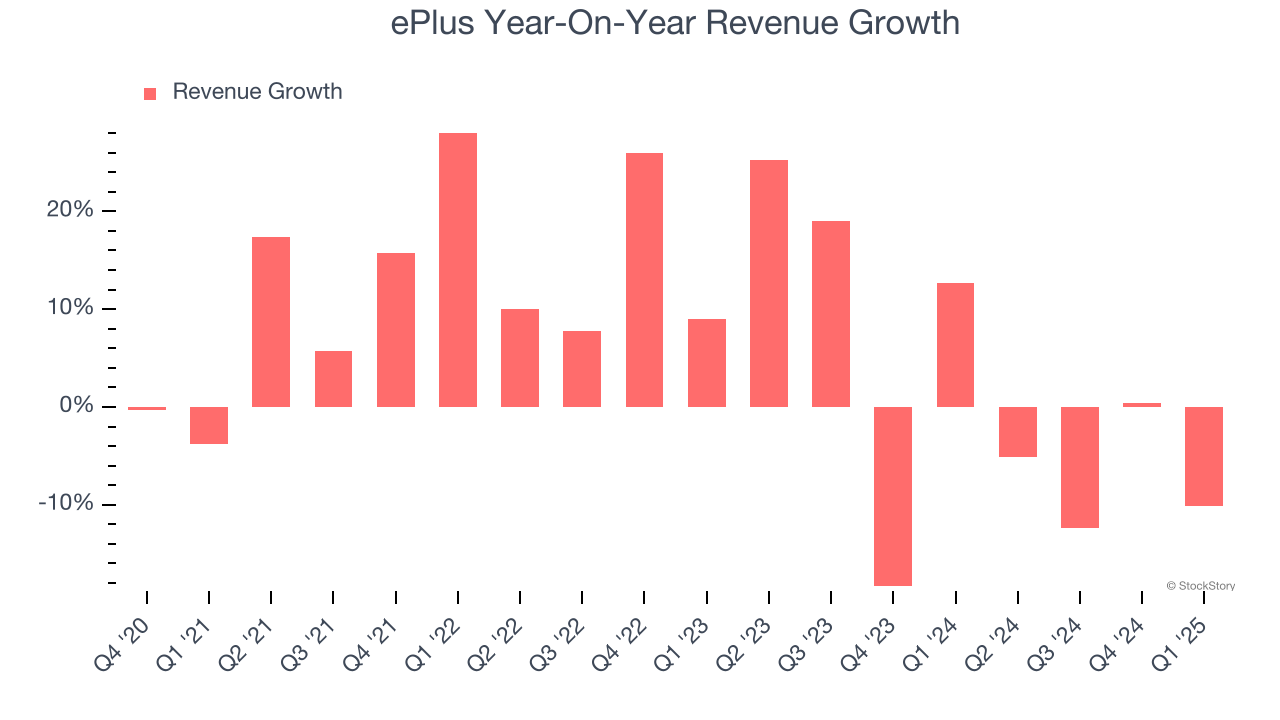
This quarter, ePlus missed Wall Street’s estimates and reported a rather uninspiring 10.2% year-on-year revenue decline, generating $498.1 million of revenue.
Looking ahead, sell-side analysts expect revenue to grow 5.1% over the next 12 months, an improvement versus the last two years. This projection is above the sector average and implies its newer products and services will fuel better top-line performance.
Today’s young investors won’t have read the timeless lessons in Gorilla Game: Picking Winners In High Technology because it was written more than 20 years ago when Microsoft and Apple were first establishing their supremacy. But if we apply the same principles, then enterprise software stocks leveraging their own generative AI capabilities may well be the Gorillas of the future. So, in that spirit, we are excited to present our Special Free Report on a profitable, fast-growing enterprise software stock that is already riding the automation wave and looking to catch the generative AI next.
Operating Margin
ePlus was profitable over the last five years but held back by its large cost base. Its average operating margin of 7.5% was weak for a business services business.
Analyzing the trend in its profitability, ePlus’s operating margin might fluctuated slightly but has generally stayed the same over the last five years. This raises questions about the company’s expense base because its revenue growth should have given it leverage on its fixed costs, resulting in better economies of scale and profitability.
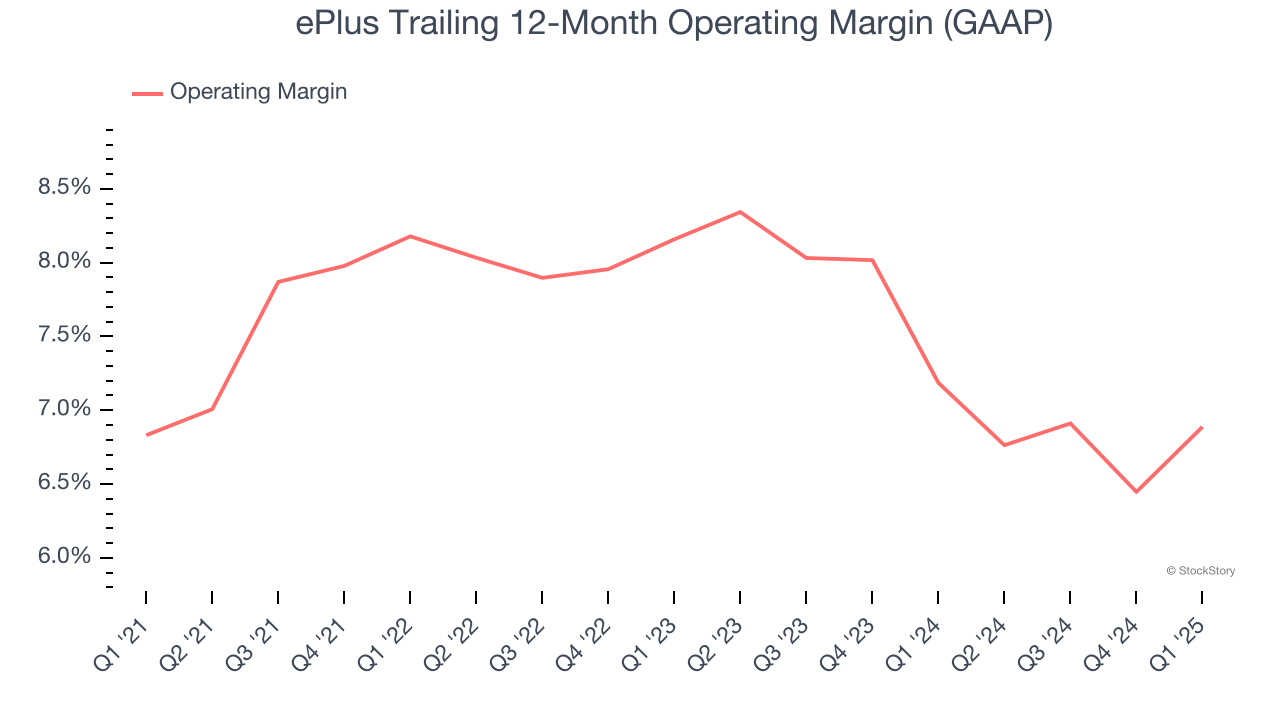
This quarter, ePlus generated an operating profit margin of 7%, up 1.7 percentage points year on year. This increase was a welcome development, especially since its revenue fell, showing it was more efficient because it scaled down its expenses.
Earnings Per Share
We track the long-term change in earnings per share (EPS) for the same reason as long-term revenue growth. Compared to revenue, however, EPS highlights whether a company’s growth is profitable.
ePlus’s EPS grew at a decent 8.7% compounded annual growth rate over the last five years, higher than its 4.9% annualized revenue growth. However, this alone doesn’t tell us much about its business quality because its operating margin didn’t expand.
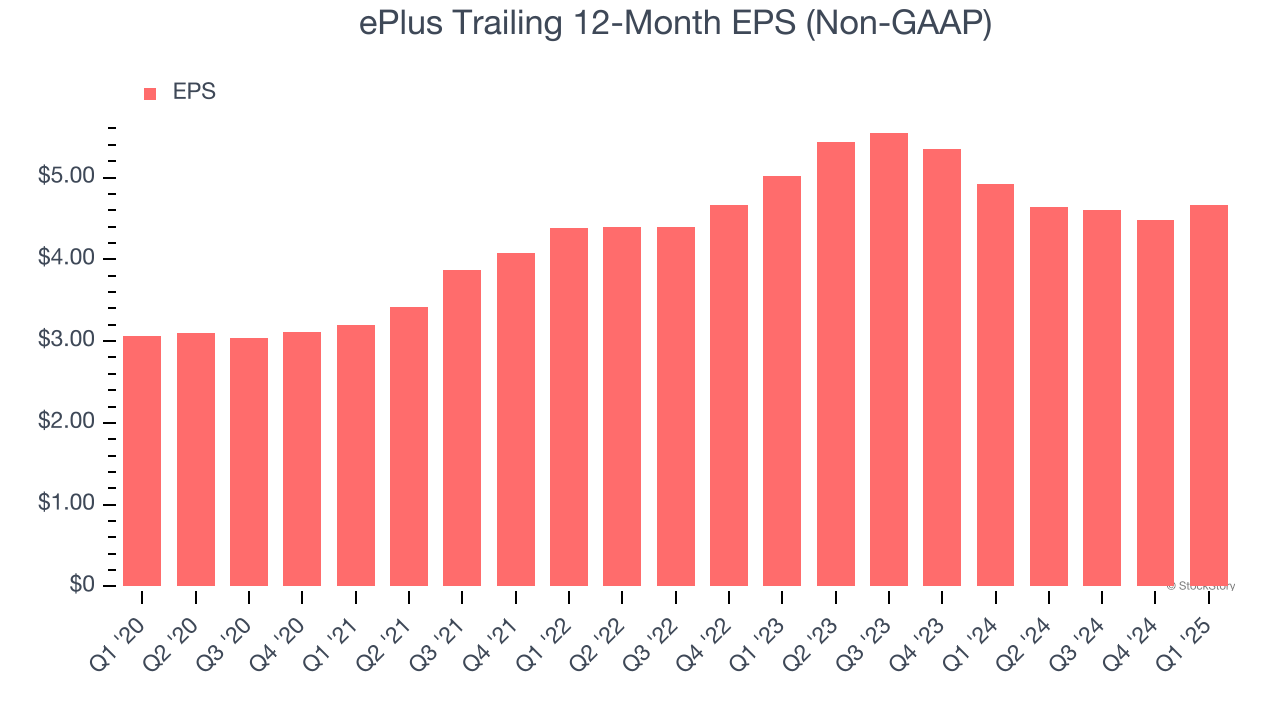
We can take a deeper look into ePlus’s earnings to better understand the drivers of its performance. A five-year view shows that ePlus has repurchased its stock, shrinking its share count by 1.3%. This tells us its EPS outperformed its revenue not because of increased operational efficiency but financial engineering, as buybacks boost per share earnings. 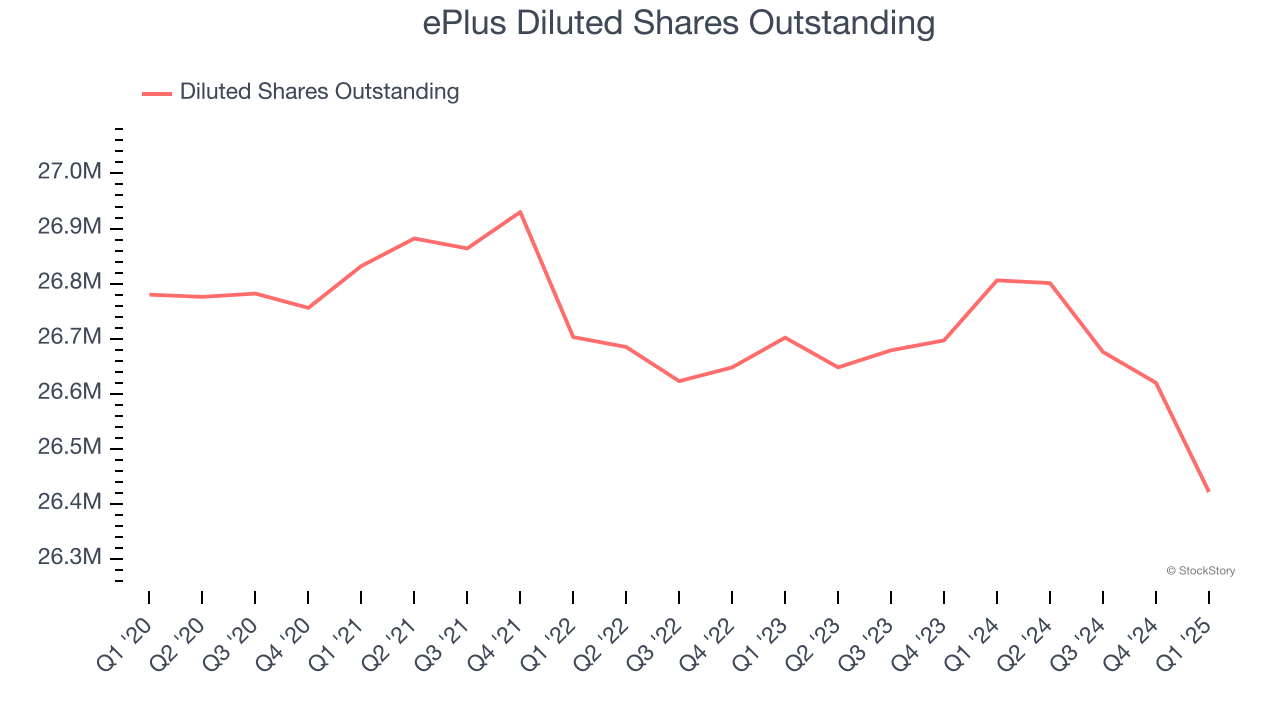
In Q1, ePlus reported EPS at $1.11, up from $0.93 in the same quarter last year. This print easily cleared analysts’ estimates, and shareholders should be content with the results. Over the next 12 months, Wall Street expects ePlus’s full-year EPS of $4.66 to shrink by 1.4%.
Key Takeaways from ePlus’s Q1 Results
Revenue missed, but EPS managed to beat. Looking ahead, the company initiated full-year fiscal 2026 guidance (since fiscal year 2025 ended in March), guiding to "net sales growth of low single digits, and gross profit and adjusted EBITDA in the mid single digits". This is below expectations of mid single digit revenue growth and double digit EBITDA growth. Shares traded down 3.2% to $63.76 immediately following the results.
Should you buy the stock or not? What happened in the latest quarter matters, but not as much as longer-term business quality and valuation, when deciding whether to invest in this stock. We cover that in our actionable full research report which you can read here, it’s free.






